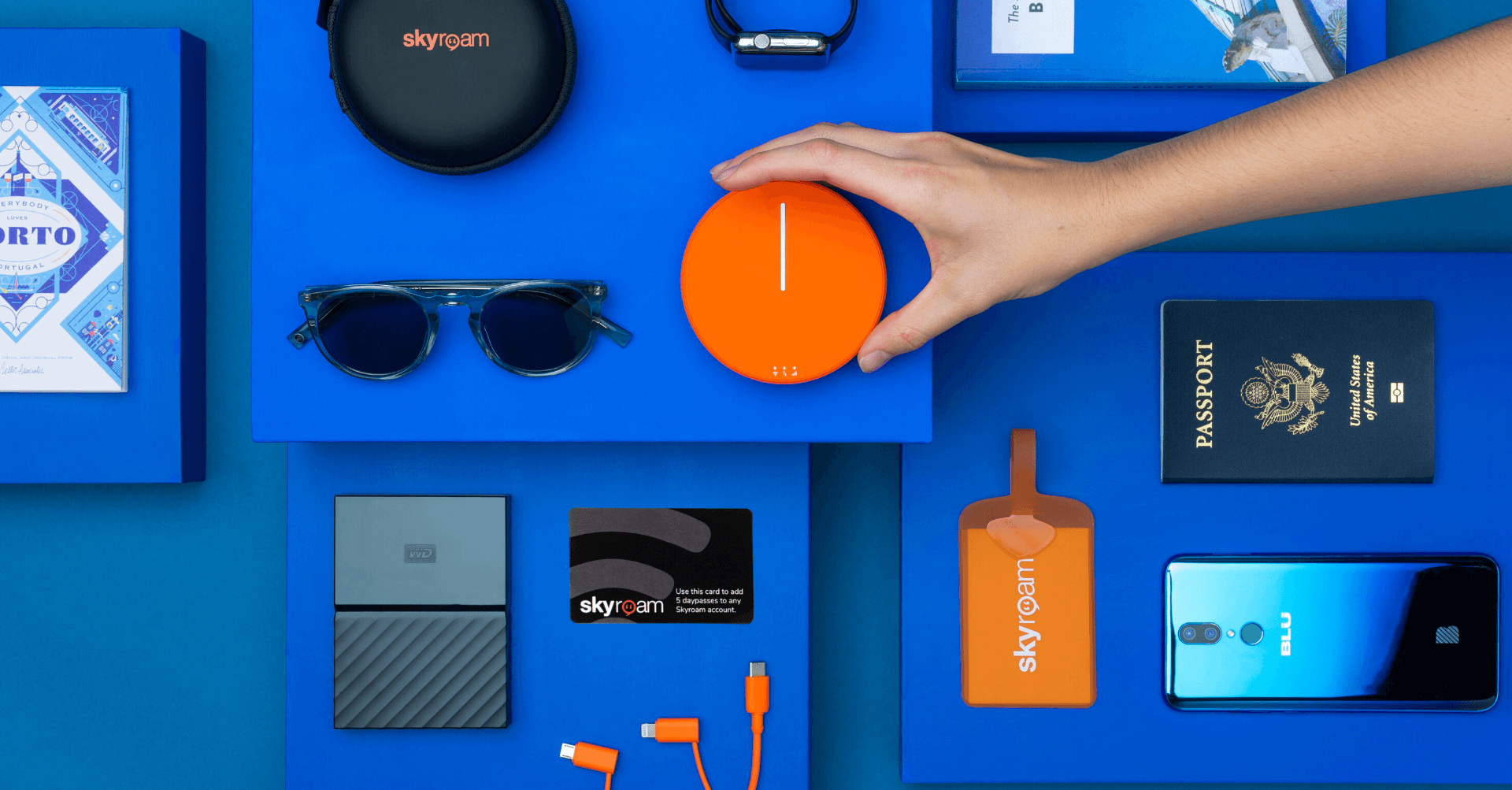
Let’s face it: Whether you’re flying to the other side of the world, the other side of the country, or even just an hour or two away, you want to stay connected.
Because of the integral role technology and the internet plays in our lives, we can feel a bit naked when we lack connectivity. Without an internet connection, it’s harder to stay in touch with our friends, check out account balances, confirm reservations, and research answers to the questions we have. For example, during your first night in Paris or San Francisco, you might want to run a quick Google search to figure out where to eat dinner.
The good news is that—in the age of technology—a number of tools and gadgets have emerged in recent years that make it easier for you to stay online wherever you’re traveling.
We’ve teamed up with our friends at Skyroam to come up with a list of six tools you need to pack in your carryon if you want to stay online, without interruption, during your travels.
1. A messaging platform
One of the easiest ways to stay connected to a group of people—whether that’s friends, family, or colleagues—is by using a messaging platform like Slack or Mattermost, both of which are freely available for smaller groups.
These platforms provide cloud-based chat rooms that offer persistent messaging across devices. While both tools are designed for enterprises, there’s no rule that prevents you from spinning up an instance of either platform for friends and family—or even just creating one to discuss a hobby with strangers you’ve met on the internet.
With a messaging app on your phone, you can let the people who care about you know when you’ve made it to your destination. And you can also easily share images and videos to make them jealous of your adventures.
2. An external battery
One of the biggest challenges of staying online when you’re traveling is maintaining a battery charge. Chances are you’re not going to sit around in your hotel room all day, and you’re not going to leave your phone behind in your hotel or Airbnb, either.
A simple $30 investment in an external battery will solve this problem. Lightweight and travel-ready by design, external batteries can help you keep your mobile devices charged as you go about your day in a foreign locale.
3. A personal hotspot
When you’re traveling, you’re always on the lookout for wifi. Whether it is in the hotel, at a restaurant, or just walking down the street, people have their phones in hand searching for connectivity, but finding a safe, solid connection is always a struggle.
Hotel wifi can be expensive or have poor connectivity and public wifi can be unsafe for your internet security and privacy. And you don’t want to miss out on an amazing local restaurant just because it doesn’t have the Wifi sticker on its door...
This is where a personal hotspot—a gadget that gives you excellent WiFi connection—can come in particularly handy.
For example, Skyroam offers a personal WiFi hotspot with unlimited data for a mere $9/day—a drop in the bucket compared to the sky-high roaming fees you might otherwise incur. You can rent from Skyroam or you can buy your own device and get service by the day, month, or GB with Global data.
Plus, their service is available in more than 130 countries. Plan your next trip with a personal hotspot in mind, so you don’t have to worry about SIM cards, contracts, or roaming fees.
4. A virtual private network
A virtual private network (VPN) is a secure network that you can connect to once you’re connected to the internet. VPNs don’t provide internet access on their own. But they do encrypt traffic, thereby enabling you to send and receive data across public networks while maintaining privacy.
When you’re traveling, you might opt to connect to a public WiFi network at a Starbucks, for example. There’s one problem: A hacker might connect to that public network, too. If they’re good at what they do, they might be able to monitor your activities.
By connecting to a VPN after you’ve connected to Starbucks’ WiFi, that would-be hacker wouldn’t be able to see what you’re doing online.
VPNs are relatively cheap. You should be able to find a decent option in the $5/month ballpark (e.g., TorGuard).
5. A project management platform
Planning on getting some work done during your trip? A project management platform like Trello or Asana can help you and your colleagues stay on the same page even when you’re working in different time zones.
By making use of a project management platform, your team can collaborate asynchronously without having to drown each other in emails.
It’s an easy way to make sure projects move forward efficiently—even in the event, everyone on your team is traveling at the same time.
6. An offline travel app
Depending on where you’re going, you might not always have connectivity. If you’re in a remote enough location, a personal hotspot might not do the trick.
To always know where you’re going, make sure you have an app on your phone that works offline, too.
For example, Google Maps recently rolled out updates that offer turn-by-turn navigation support when you’re not connected. That way, you get the peace of mind that comes with knowing that you can make it from Point A to Point B—even when you’re in some of the most remote places on earth.
For more information on travel apps that work well offline, check out this blog post from the TripSavvy team.
Not too long ago, traveling meant giving up the convenience that comes with always being connected. But thanks to a number of new innovations that have arrived on the market in recent years, that’s no longer the case.
While you might not need all six of these tools to stay online while traveling, a few of them can go along way toward making you feel right at home—regardless of where you happen to find yourself on the globe.
